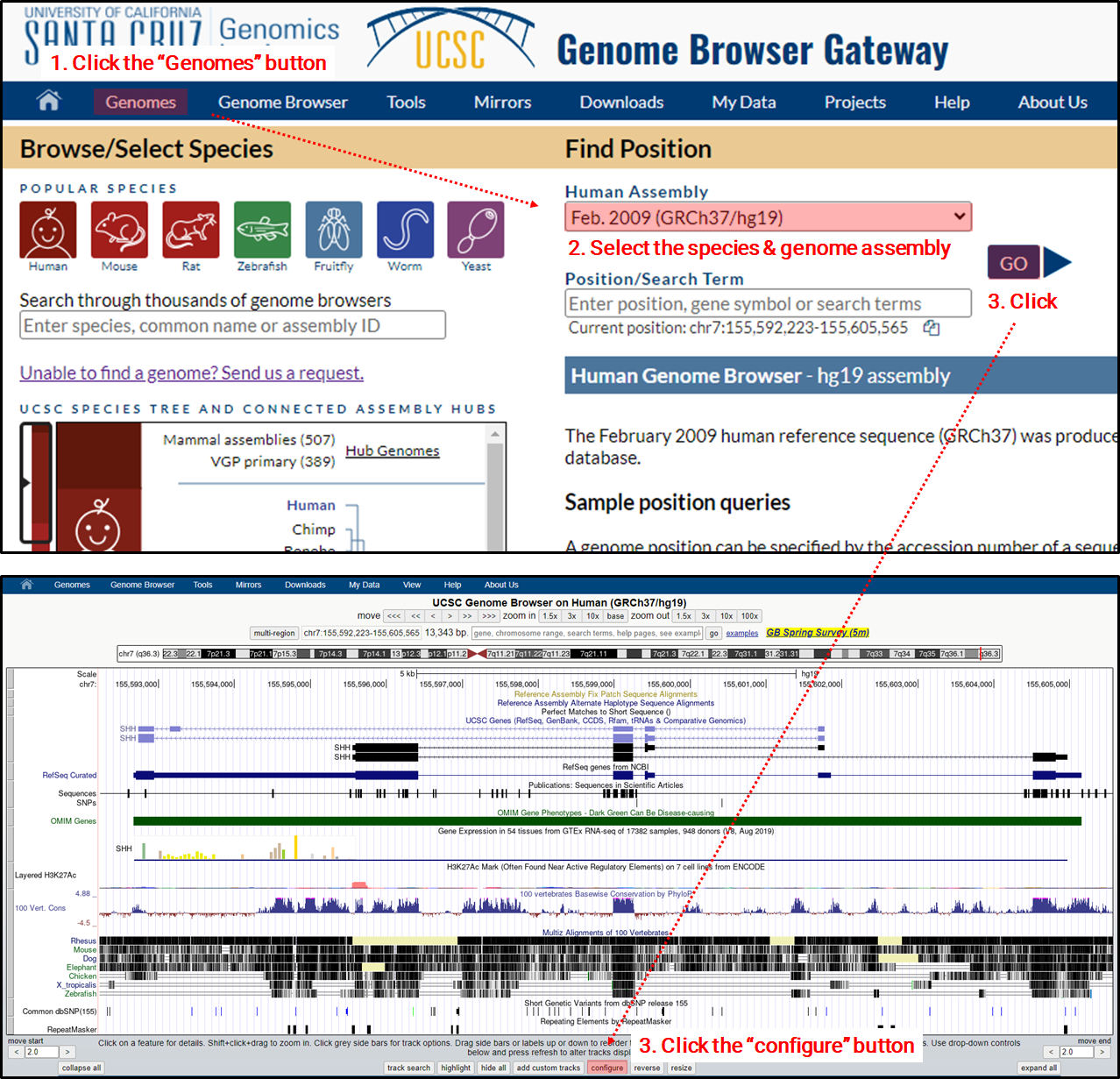[DB] Diverse genome annotations in UCSC browser
In the quest to understand how genomes are regulated and function, and their implications in disease, researchers worldwide undertake diverse studies to annotate genomes of various species with different objectives and methodologies. The UCSC Genome Browser serves as a centralized hub where the culmination of these key research findings is readily accessible. Here’s how you can access this invaluable information.
How to access?
Link: UCSC genome browser

Lists of annotations with brief information for selected species & genome assembly

Links of major species annotations stored in UCSC
Human: T2T CHM13v2.0/hs1, GRCh38/hg38, GRCh37/hg19
Experimental models
Mouse: GRCm39/mm39, GRCm38/mm10, NCBI37/mm9
Rat: rn7, rn6
Zebrafish: danRer11, danRer10
Fruitfly (D. melanogaster): dm6
Worm (C. elegans): ce11
Yeast (S. cerevisiae): sacCer3
Pet animals
Dog: Dog10K_Boxer_Tasha/canFam6, UMICH_Zoey_3.1/canFam5, UU_Cfam_GSD_1.0/canFam4, Broad CanFam3.1/canFam3
Cat: felCat9, felCat8
Farm animals
Pig: susScr11, susScr3
Cattle (cow): bosTau9, bosTau8
Chicken: galGal6, galGal5
Horse: equCab3
Primates
Chimpanzee: panTro6, panTro5
Bonobo: panPan3, panPan2
Gorilla: gorGor6, gorGor5
Orangutan: ponAbe3
Rhesus: rheMac10, rheMac8
Babbon: papAnu4
Macaque: macFas5
Squirrel Monkey: saiBol1
Marmoset: calJac4
Peto’s paradox (Long-lived & cancer-free)
Elephant: loxAfr3
Naked mole-rat: hetGla2

Leave a comment